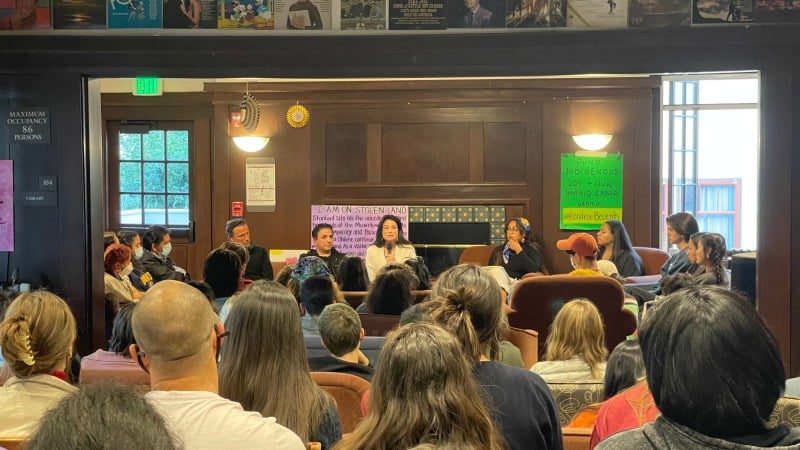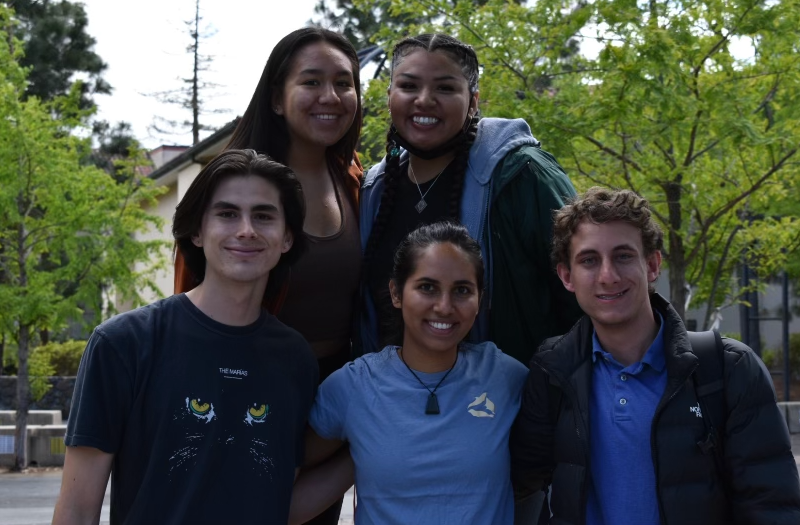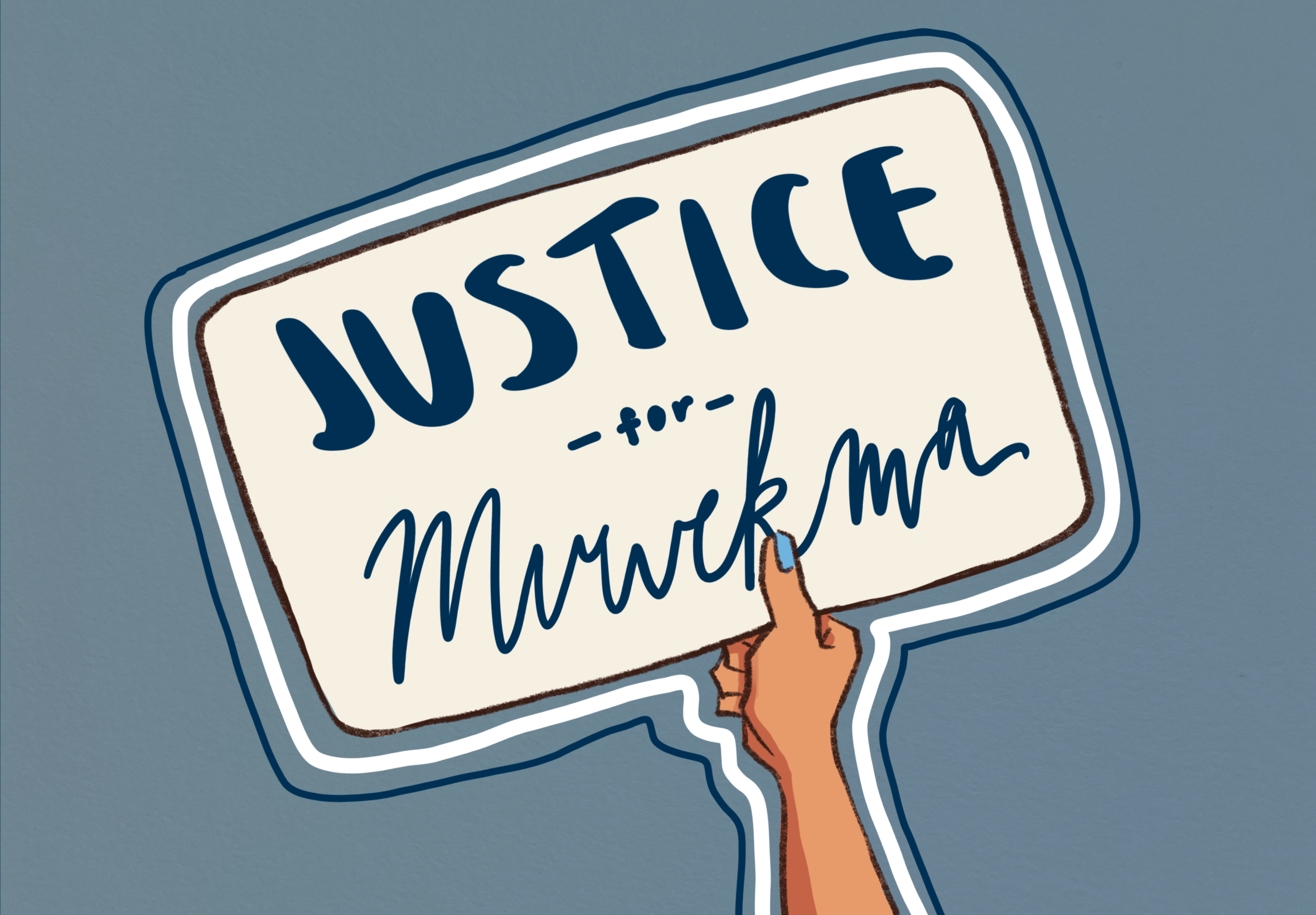Justice for Muwekma, a new Stanford student activist group, is supporting the Muwekma Ohlone Tribe in its efforts to achieve recognition from the federal government. Here is an overview of the Tribe, its fight for federal recognition and the Stanford students working to help the Muwekma Ohlone people reach this goal.
Historical context
While 574 tribes are currently federally recognized, as many as 400 other tribes in the United States still do not have federal recognition. Among them is the Muwekma Ohlone Tribe — a group with over 600 tribal members whose ancestral lands include the Stanford campus.
This June marks 98 years since the passage of the Indian Citizenship Act, which granted citizenship to all Native Americans born in the United States, and 88 years since the passage of the Indian Reorganization Act, which returned some lands to tribes and promoted Native American autonomy. These years represent nearly a century of continuous recovery from European immigrants’ warfare against and colonization of Native Americans hundreds of years ago.
Even after the U.S. Congress passed the Indian Citizenship and Reorganization Acts, Native American communities across the U.S. have continued to suffer from poverty and discrimination. Access to the array of services and resources available to Native Americans through the federal government is dependent upon tribal federal recognition.
The fight for federal recognition
For the families of the Muwekma, the fight for federal recognition has continued for four decades, according to Chairwoman of the Muwekma Ohlone Indian Tribe of the San Francisco Bay Area Charlene Nijmeh.
The Muwekma Ohlone Tribe, formerly labeled as the “Verona Band,” was identified as landless on the 1906 census and was included in a list of tribes to receive land by Congress in 1914, 1923 and 1927, according to Nijmeh. However, the Tribe was then removed from the list in 1927, along with 134 other California Indian bands, without communication.
The Bureau of Indian Affairs (BIA) said the Tribe was not placed on the 1978 official list because “the Tribe withered away for reasons yet to be determined,” according to Nijmeh. However, “the Tribe never withered away and was always in plain sight,” she said.
Without formal status as a federally recognized tribe, the Muwekma Ohlone Tribe and other non-federally recognized tribes have three avenues to gain federal recognition: by carrying out the administrative procedures under Part 83 of Title 25 of the Code of Federal Regulations (CFR), by act of Congress or by decision of a United States court.
By 2013, the Department of the Interior (DOI) that implements Part 83 of Title 25 had received 356 letters of intent from groups seeking federal recognition. To this day, 18 petitions have been acknowledged and 34 petitions denied.
The primary author of the acknowledgement regulation of Part 83 of Title 25 John Bud Shepard, a former Branch Chief for the Federal Recognition Project, referred to the regulation as “fatally flawed and unworkable” during a 1992 Congressional testimony. The procedure “takes too long to produce results,” are administratively “too complicated” and “the decisions are subjective and are not necessarily accurate,” he said.
After decades of going through the “flawed and broken federal acknowledgment process,” the members of the Muwekma Ohlone Tribe came to the realization that “only a grassroots movement from the community and citizens can convince political leaders,” Nijmeh said.

Justice for Muwekma
This year, the Muwekma Ohlone Tribe began working in collaboration with Stanford students from the Justice for Muwekma group, who are helping the Tribe build grassroots social and historical justice campaigns on campus that are focused on advancing the rights and wellbeing of the Tribe, according to Nijmeh.
The student group initially launched as a class project from CSRE 196C: “Introduction to Comparative Studies in Race and Ethnicity,” a course taught by professor Michael Wilcox. The course included an optional Community Engaged Learning section, which connected students to members of the Muwekma Ohlone Tribe.
The Justice for Muwekma campus activist group dove right into work in accordance with the urgency of the situation, according to Wilcox.
Informing the student body about the federal recognition process is a priority for the student group, as “the general student body has very little knowledge” of the process for tribes, said John Lowndes ’25, an Alaska Native and member of Justice for Muwekma. “Visibility is a huge goal,” he said. To this end, the student group is also working to fly the Tribe’s flag on campus, according to Lowndes.
The group has created a variety of campaigns and projects in support of the Tribe, including a social media toolkit, Instagram campaign, digital murals, stickers and pamphlets. They also organized information sessions and two phone banking events to pressure the Senate Committee and Bay Area legislators to vote on the California Senate Joint Resolution 13 (SJR 13) that seeks federal recognition of the Muwekma Ohlone Tribe, according to Nijmeh. Recently, the group tabled at the 51st Annual Stanford Powwow to increase support for the cause.
Lowndes, Evan Kanji ’22 and Lily Joy Winder ’25, who all got involved with Justice for Muwekma after taking Wilcox’s class, agreed that the Stanford community should be cognizant of the people whose lands they occupy. “Our student group is less about us and more about the Tribe,” Lowndes said.
Through their work, the members of the group also reflect on themselves, their roles and their positions as Stanford students, according to Kanji. Stanford students “should use institutional power and privilege to empower others,” and a key tenant of Justice for Muwekma is “to use our voices to amplify other voices,” he said.
As a Native student at Stanford, Winder said she thinks a lot about how to distribute the passion and goals of the Muwekma Ohlone Tribe to get other people to care. “The fight for federal recognition should not just be a burden of the Native American community — it should be everybody’s job,” she said.
Justice for Muwekma has become “the basis for a new relationship between the Stanford community and the Tribe,” said Wilcox, a senior lecturer in Native American studies and CSRE and the Tribal Historic Preservation Officer for the Muwekma Ohlone Tribe of the San Francisco Bay Area.
Much like his students, Wilcox said he “feels a responsibility to educate the Stanford community about the Native American community” as a member of the small population of Native American archaeologists in the country.
“We can bring changes all over the world wherever we want to — but we also have the same chance to bring changes right here on campus,” Wilcox said.

Looking forward
Rather than creating tribes, Chairwoman Nijmeh said that federal recognition “recognizes social and political communities that predate the United States.”
Through the recognition, the Tribe aims to gain repatriation of ancestral remains, along with other federal benefits. The University of California, Berkeley currently holds about 24,000 Muwekma ancestral remains, according to Wilcox.
The Muwekma Ohlone Tribe hopes to grow its movement from Stanford to other universities, and even Bay Area high schools where the Tribe can have chapters of Justice for Muwekma working independently to push for political support, according to Nijmeh.
“It is vitally important that the Stanford community lead as an example to others since the University resides on the aboriginal territory of the Muwekma Ohlone people,” she said. “It takes a powerful spark to start a wildfire and I believe these brilliant, passionate, respectful and caring students are the spark we needed.”
Nijmeh also emphasized that the restoration of Muwekma’s status is not complicated: Congress can simply pass a bill. It is not about the evidence or documentation of the tribal community and continuity, which are irrefutable, she said. Rather, she said the decision of whether a tribe should be federally recognized is corrupted by influence from already recognized tribes.
“Our rights as a sovereign people to choose our own path have historically been ignored. Our culture, traditions, language, belief systems and even our children were stolen from us. All these attacks on our sovereignty were because the lands we inhabited were too valuable,” she said. “We must restore our sovereignty to ensure our traditions, culture and language survive and do not come under attack ever again.”
This article has been corrected to reflect that the Muwekma Ohlone Tribe was removed from the list of tribes to receive land in 1927 and not 1978, The Daily regrets this error.
